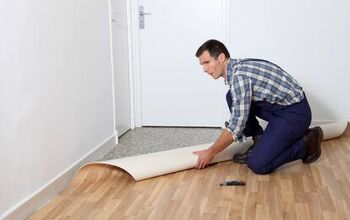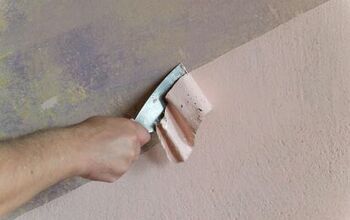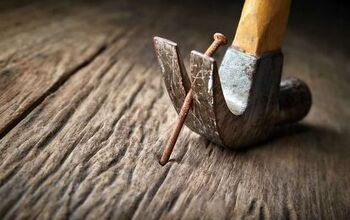How To Remove Gorilla Glue From Metal (5 Ways To Do It!)

Gorilla Glue is a useful adhesive for binding materials together that are generally difficult to stick. These materials include wood, stone, foam, ceramic, and metal. Gorilla Glue’s most prevalent advantage is that it does not lose strength in shifting temperatures; it still performs well in both hot and cold weather.
It is also waterproof and will not break down when it comes into contact with water or moisture. The durability and strength of Gorilla Glue makes it especially difficult to remove from a variety of materials, including metal.
While it can be challenging, Gorilla Glue can be removed from metal using a variety of different tools such as sandpaper, acetone, isopropyl alcohol, paint thinner, pointed tools, and more.
Do You Need Handyman Services?
Get free, zero-commitment quotes from pro contractors near you.

Act Quickly to Remove Gorilla Glue from Metal
The best way to remove Gorilla Glue from metal is to act as quickly as possible. Once the glue gets on an unintended surface, the longer you allow it to sit, the stronger it becomes. It will build up resilience and waterproofing very quickly, making it much more difficult to remove.
If the glue hasn’t dried completely, remove it immediately using a scraping tool. Any pointed or robust object such as a knife, chisel, or anything you can use to scrape the glue quickly will work. Follow these steps for removing Gorilla Glue from metal quickly with a pointed tool:
- Grab a hammer and a chisel, flat head screwdriver, or any other scraping tool you may have on hand.
- Place the face of the tool on the edge of the glue and start hammering the end of the tool.
- Continue this process until you’ve completely peeled off all of the Gorilla Glue.
This technique is best achieved when the chisel is kept on the edge, or start, of the glue. Be sure to only use these tools over the affected area and move carefully, although quickly, to protect the metal from scratching.
Method 1: Use Sandpaper to Remove Gorilla Glue
If the Gorilla Glue has dried, you can try using sandpaper to remove it. Sandpaper is very popular for removing dry materials from virtually any surface. Using its’ pointed finish at the front, sandpaper can also be used to remove Gorilla Glue from metal.
To use sandpaper for the removal of Gorilla Glue on metal, be sure to select a high-quality grade piece. Then, rub it over the affected area, applying some pressure with your fingers. To remove the glue quickly, use varying directional movements. This process should break down the glue into a powder form.
Use a damp cloth to clean up the removed glue particles and repeat the process until the Gorilla Glue is completely removed from the metal surface. To prevent scratches, be sure to avoid using the sandpaper on the areas that are unaffected by glue.
Method 2: Remove Gorilla Glue with Heat
Another option you have for removing Gorilla Glue from metal surfaces is to use heat. When Gorilla Glue comes into contact with temperatures that are 215 degrees and higher, its’ bond on the metal starts to loosen. Try these steps for removing Gorilla Glue from metal with heat.
- Using an old, scrap piece of metal, place it in the fire of a stove or another open flame.
- Allow it to heat for as long as possible. It should turn red.
- Place the heated piece of metal over the glue.
- If the glue starts to melt, this is a good sign that the heat will remove all of the glue.
- If you don’t have any results, you may need to heat the metal again.
- Once the glue is returned to a liquid form, simply wipe it clean from the surface. Or, you may need to use a scrapping method if it’s still slightly dry.
While this method can be effective, it is crucial that you use special care and be extremely careful while heating the metal. Make sure that you wear protective gloves when holding the hot piece of metal and be extra cautious while performing these steps.
If you’re at all concerned about safety, consider a different method for removing Gorilla Glue from metal.
Method 3: Try Isopropyl Alcohol to Remove Gorilla Glue
Like heat, Isopropyl alcohol can loosen the bond of Gorilla Glue on metal. In fact, it is a widely known chemical, commonly used for removing Gorilla Glue from metallic and even plastic surfaces. To use isopropyl alcohol for the removal of Gorilla Glue, dab a cotton ball with the chemical and place it on the affected area.
Let the alcohol sit on the glue for about five minutes. Then, once the time is up, wipe the area using warm, soapy water. With the glue loosened up, you can use a knife to scrape the glue off the metal. Again, begin at the edge point of the glue and move from start to end on the affected area.
Method 4: Use Acetone
Acetone is another effective solvent for removing dried and harsh chemicals off of a number of surfaces. It is also commonly found in many nail polish removers. To effectively use acetone for the removal of Gorilla Glue from metal, get either a 100% pure acetone product or a nail polish remover that contains acetone. Then, follow these steps:
- Saturate a cotton ball with acetone and press it firmly against the Gorilla Glue.
- Allow the cotton ball to sit on the surface for at least five minutes.
- Then, remove the soaked cotton ball and use a damp cloth to clean the affected area.
- Use a sharp knife, or another scrapping tool, to scrape off the glue. Do not remove the Gorilla Glue until it has softened from the acetone.
This process may need to be repeated multiple times if the glue has not softened or it is still considerably stuck to the metal surface. If acetone does not work, you may find success with either denatured alcohol or hydrogen peroxide. Both can be applied using the same method outlined above.
Method 5: Paint Thinner for Dissolving Gorilla Glue
Paint thinner is another solvent, which is a lifesaver for removing oil-based paint from paintbrushes. However, it can also be implemented for removing Gorilla Glue from metal.
Note: When using paint thinner, make sure you wear protective gloves and a mask to protect your lungs from the fumes. You also want to strongly avoid the paint thinner from getting anywhere else on the metal other than the affected area.
Take a piece of old cloth and overlap it so it’s strong. Apply some paint thinner directly to the cloth and press it to the area of the metal with the glue. Rub the cloth over the glue for a few seconds. The first pass should’ve dissolved the glue enough for it to free up from the metal surface. Then, take a clean piece of cloth and rub the area until the glue is removed.
Do You Need Handyman Services?
Get free, zero-commitment quotes from pro contractors near you.

Safety Precautions
When removing Gorilla Glue from metal, there are some precautions you must take to protect yourself and the surface you are working with. Follow these safety precautions before you pick a removal method to try:
- Always wear protective gloves and eyeglasses before you being the removal process. This is especially important since you are working with chemicals, and likely solvents.
- Keep your eyes protected while you’re scraping the Gorilla Glue. It is highly probable that tiny particles of both glue or metal could go flying and end up in your eyes.
- Work in a well-ventilated space. Open windows, doors, and consider bringing in fans to achieve adequate airflow.
- Avoid using excessive force on the metal. This is particularly important to note for stainless steel materials, as you’ll likely be left with unsightly scratches.
- Be cautious when working with a knife, blade, or other pointed tool while scraping up the glue.
- Before you use a solvent or chemical for removal, you’ll want to test it first. Use a small bit of the compound on an inconspicuous area to ensure that you don’t produce any undesirable reactions or damage to the metal surface.
- Stay alert and attentive when working with pointed tools and dangerous chemicals.
Regardless of the method you choose to use to remove Gorilla Glue from metal, be sure to proceed with caution to keep yourself and the metal itself safe.

Jessica considers herself a home improvement and design enthusiast. She grew up surrounded by constant home improvement projects and owes most of what she knows to helping her dad renovate her childhood home. Being a Los Angeles resident, Jessica spends a lot of her time looking for her next DIY project and sharing her love for home design.
More by Jessica Stone



























